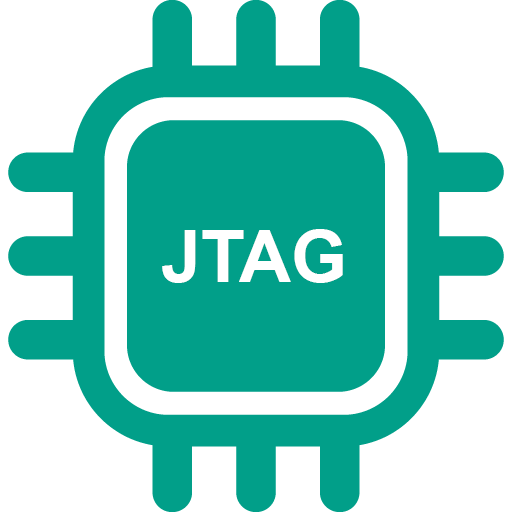Smart Home: Install Home Assistant Supervised
Previously I installed HassOS, it works pretty well except the fact that it is a black box for me at some extent, this time, I take a step further and try to make home assistant supervised work with my Pi board.
Install Raspberry OS
From the doc I found here, the latest supported OS is Debian 10 (Buster), so I downloaded Raspberry Pi OS Lite from official website, other version should be OK, but lite is enough to save some bandwidth and disk space.
After flashing the Raspbian OS image to Mico-SD card, follow the instructions in Install Raspberry Pi OS in post to setup WiFi and enable ssh connection
Install Docker
supervisor mode is actually a bunch of docker images put together, after home assistant supervised ready, you will get these images:
pi@raspberrypi:~ $ docker images
REPOSITORY TAG IMAGE ID CREATED SIZE
homeassistant/raspberrypi3-homeassistant 0.118.0 3e83320b9713 2 days ago 1.04GB
homeassistant/armv7-hassio-supervisor 2020.11.0 ead1f290d644 2 weeks ago 250MB
homeassistant/armv7-hassio-supervisor latest ead1f290d644 2 weeks ago 250MB
homeassistant/armv7-hassio-dns 2020.11.0 dd67787d179b 2 weeks ago 99.4MB
homeassistant/armv7-hassio-cli 2020.10.1 e93dd8a30beb 3 weeks ago 72.1MB
esphome/esphome-hassio-armv7 1.15.3 93e2512c3ab9 4 weeks ago 1.01GB
homeassistant/armv7-hassio-observer 2020.10.1 bf193dc8f2c4 5 weeks ago 71.8MB
homeassistant/armv7-hassio-multicast 3 0fbd536e8547 3 months ago 63.3MB
homeassistant/armv7-hassio-audio 17 811e9a849849 3 months ago 80.2MB
This section installs latest docker container on Debian Buster, please be noted this is slightly different from the official Documentation:
sudo apt install -y \
apt-transport-https \
ca-certificates \
curl \
gnupg-agent \
software-properties-common
curl -fsSL https://download.docker.com/linux/debian/gpg | sudo apt-key add -
sudo apt-key fingerprint 0EBFCD88
cat << EOF | sudo tee -a /etc/apt/sources.list.d/docker.list
deb [arch=armhf] https://download.docker.com/linux/debian buster stable
EOF
sudo apt update
sudo apt install -y docker-ce docker-ce-cli containerd.io
sudo usermod -aG docker $(whoami)
sudo reboot
Pull docker images from private register server or mirror is preferred:
cat << EOF | sudo tee -a /etc/docker/daemon.json
{
"registry-mirrors": [
"http://ubuntu.local:5000",
"https://hub-mirror.c.163.com",
"https://docker.mirrors.ustc.edu.cn"
],
"log-driver": "journald",
"storage-driver": "overlay2",
"debug": true
}
EOF
sudo systemctl daemon-reload
sudo systemctl restart docker
If there are images in other raspberrypi board, the following script can be used to push them to local registry for later use:
for line in $(docker images --format '{{.Repository}}:{{.Tag}}'); do
docker image tag "${line}" ubuntu.local:5000/"${line}"
docker push ubuntu.local:5000/"${line}"
done
Suppose the private registry’s host name is ubuntu.
Install Home Assistant Supervised
Before installing home assistant, some packages needs to be installed first:
sudo apt install -y jq avahi-daemon apparmor-utils network-manager
curl -Lo installer.sh https://raw.githubusercontent.com/home-assistant/supervised-installer/master/installer.sh
sudo bash installer.sh -m raspberrypi3
Please note that network-manager provides MAC address randomization feature, and
enabled by default, which will cause IP address changing every time system reboots,
this can be disabled by creating a config file with below contents:
cat << EOF | sudo tee -a /etc/NetworkManager/conf.d/wifi_rand_mac.conf
[device]
wifi.scan-rand-mac-address=no
EOF
Although this solution comes from wiki.archlinux.org, I first found this in this post started by revolter.
Using local registry can reduce the installation greatly, but still has to wait for couple of minutes, you will see these docker instance running:
pi@raspberrypi:~ $ docker ps
CONTAINER ID IMAGE COMMAND CREATED STATUS PORTS NAMES
4370615063a2 homeassistant/armv7-hassio-multicast:3 "/init" 9 hours ago Up 9 hours hassio_multicast
80de08023066 homeassistant/armv7-hassio-cli:2020.10.1 "/init /bin/bash -c …" 9 hours ago Up 9 hours hassio_cli
be52f188a3ff homeassistant/armv7-hassio-audio:17 "/init" 9 hours ago Up 9 hours hassio_audio
1a1e5ae370aa homeassistant/armv7-hassio-dns:2020.11.0 "/init" 9 hours ago Up 9 hours hassio_dns
91ea6e279f50 homeassistant/raspberrypi3-homeassistant:0.118.0 "/init" 19 hours ago Up 9 hours homeassistant
7ecae1febe03 homeassistant/armv7-hassio-observer:2020.10.1 "/init" 20 hours ago Up 9 hours 0.0.0.0:4357->80/tcp hassio_observer
5968df99800b homeassistant/armv7-hassio-supervisor "/init" 20 hours ago Up 9 hours hassio_supervisor
Configuration
There are several different methods to put the configurations I previously finished,
usually I do this by copy them to /usr/share/hassio/homeassistant/ use scp command
under Raspbian OS.
The second similar way to do this is log into homeassistant and using scp command:
pi@raspberrypi:~ $ docker exec -it homeassistant sh
/config # ls
automations.yaml deps groups.yaml home-assistant_v2.db scripts.yaml tts
configuration.yaml esphome home-assistant.log scenes.yaml secrets.yaml
There is also an easy way: install samba under Supervisor side panel.
For this method, I need to remind you that, samba must be configured before start, and the password should be enclosed in quotes (single or double).
If you need to upload esphome firmware to esp board via USB cable, permission needs to be granted with:
sudo usermod -a -G dialout $(whoami)
sudo reboot
Otherwise, there is only one option in ESPHome web page.
